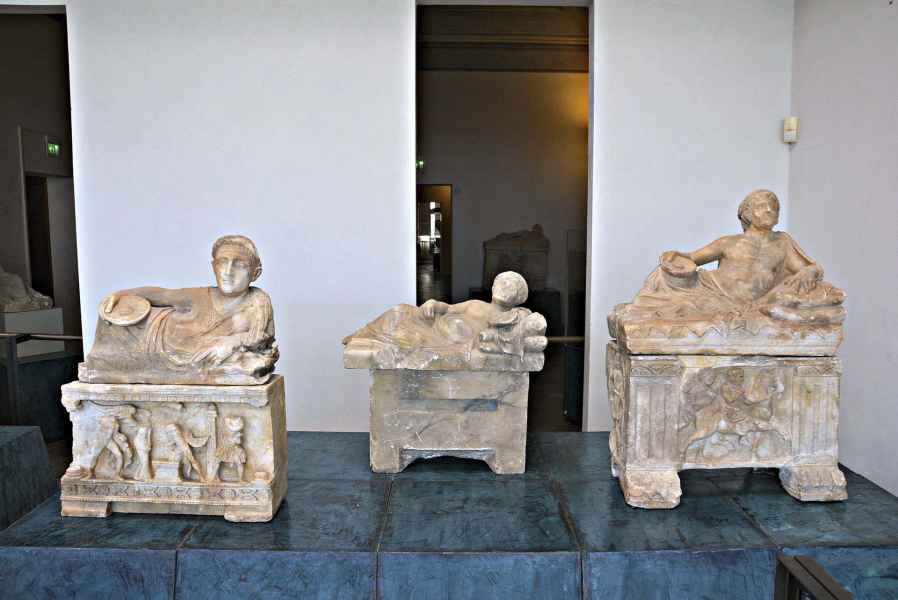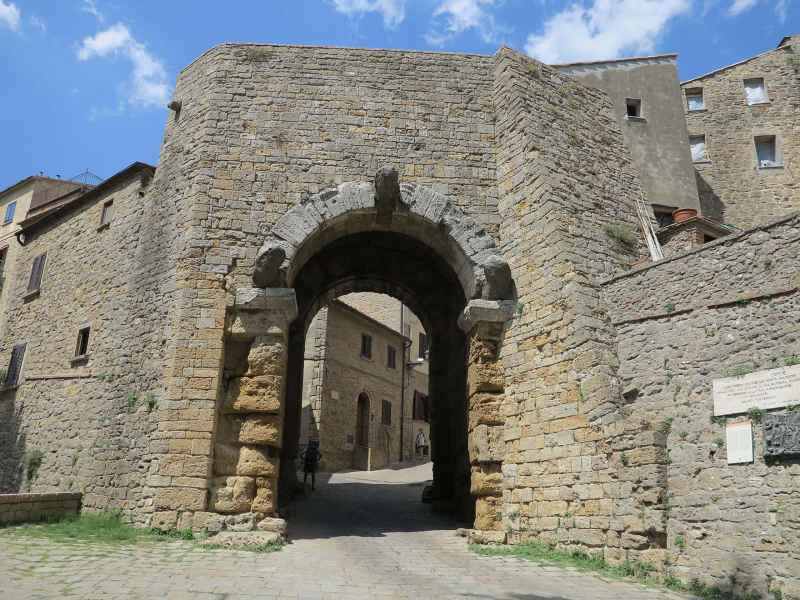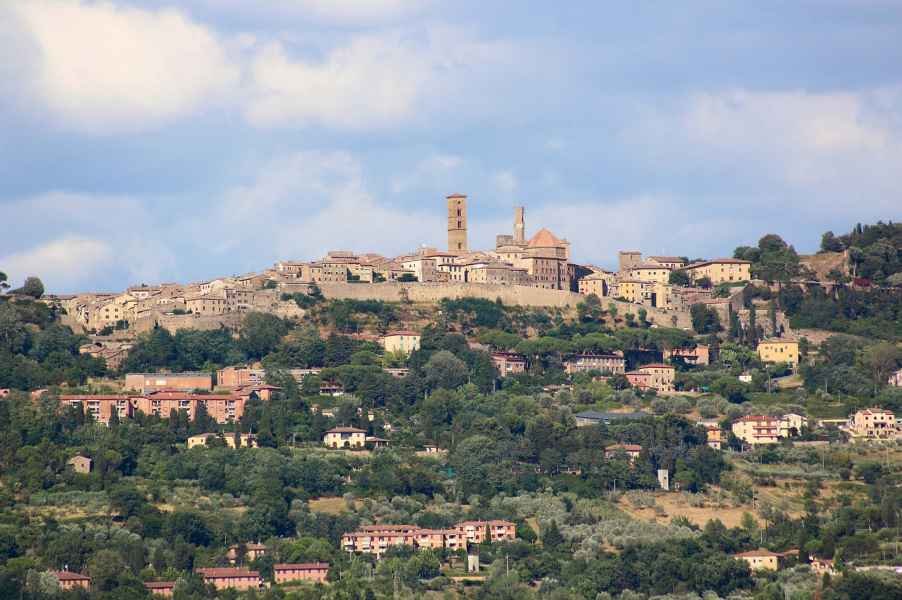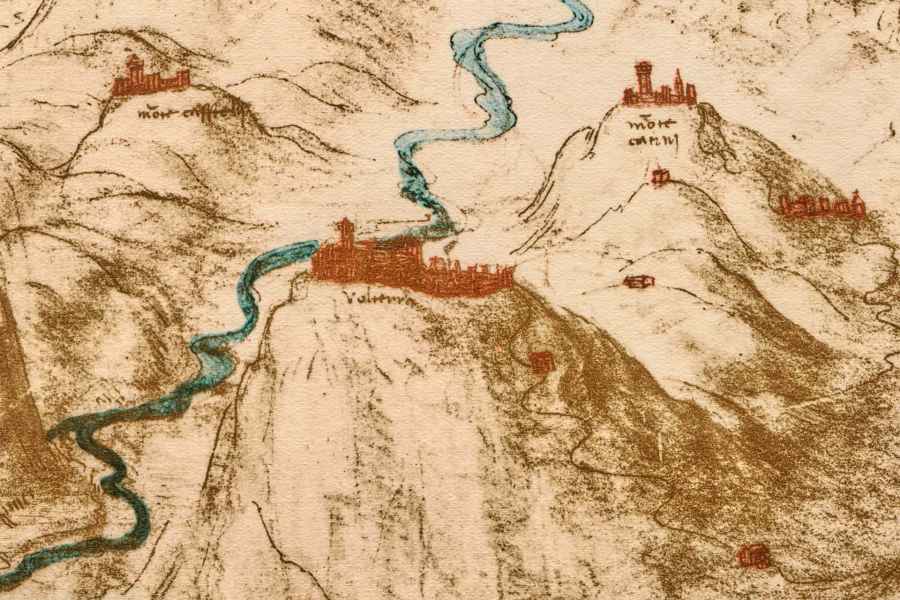News of the discovery of Etruscan remains in and around Volterra was already circulating first in humanist circles at the beginning of the 15th century and then among men of letters between the 15th and 16th centuries. Cosimo the Elder had a great love of antiquity and this interest was shared by subsequent generations of the Medici family; Lorenzo the Magnificent was known for his collection of archaeological finds, while his son Giovanni, who would become Pope Leo X, retained close ties with Volterra after having served as abbot of the Badia dei SS. Giusto e Clemente. When he commissioned the construction of the Teatro del Campidoglio, Leo X ordered that the walls be decorated with themes and motifs inspired by his “Etruscan ancestors”.
A poem by Ugolino Verino written in 1483 mentions the influence of Etruscan art on the sculptor Donatello.
Detailed reconstructions of the Etruscan town of Volterra from different orientations appear on maps in the Windsor collection – RL 12683 (from the east) and RL 12278 (from the west). The importance of the town’s geographic location in relation to Val de Cecina and the Valdera is underlined in Leonardo’s hydrographic map RL 12277.
The artist also records in Codex Madrid II (f. 3r) the results of his studies to determine the exact geographic positions of other localities of importance for his hydrographic project and the possible path for a canal which from Montalbano might be directed towards the Valdarno valley, the Monti Pisani, and San Gimignano.
In the medieval and Renaissance periods, both Florence and Pisa aspired to gain control of the territory of Volterra due to its valuable mineral resources. Leonardo must have been aware of the impressive Etruscan and Roman remains of the town, such as the monumental gate known as the Porta dell’Arco and the town’s defensive walls, whose circumference in the 4th century BC measured 7,280 meters.
In the collection of the Fondazione Cassa di Risparmio di Volterra is a small painting of Saint John in the Wilderness (gift of Mino Rosi) by an anonymous follower of Leonardo, which bears similarities to a panel painting in the National Gallery of Scotland in Edinburgh (first attributed to Cesare da Sesto, and then to Lanino) and to a drawing by Leonardo which was stolen from the Sacro Monte in Varese.
Among the illuminated manuscripts in the Biblioteca Guarnacci is the autograph folio of Giovan Francesco Marliani’s poem Epitalamio (Ms. 48.3.7), which was written in 1488 to mark the wedding of Bianca Maria Sforza to Matthias Corvinus (although this marriage never took place). The folio is embellished with a famous miniature painting (attributed to Giovanni Ambrogio de’ Predis) of the groom, who was the king of Hungary and a refined art collector.

Volterra
Texts by
Alessandro Vezzosi, in collaboration with Agnese Sabato / English translation by Lisa Chien
Related resources
External links
Gallery
Related resources
External links
Gallery








